The year is 1865 and the Civil War has just ended. While westward expansion had significantly slowed during the war, it did not take long for it to resume. As settlers pushed for new territories to be opened, it would spark a resurgence of the American Indian War. Out on the westerns front, in Kansas, soldiers were tasked with taming the plains for the influx of new arrivals. Our visit to Fort Hays State Historic Site offered a glimpse at life in this outpost during those tumultuous times.
We want to thank Visit Hays and Kansas Historical Society for hosting our visit. Rest assured all opinions are our own.
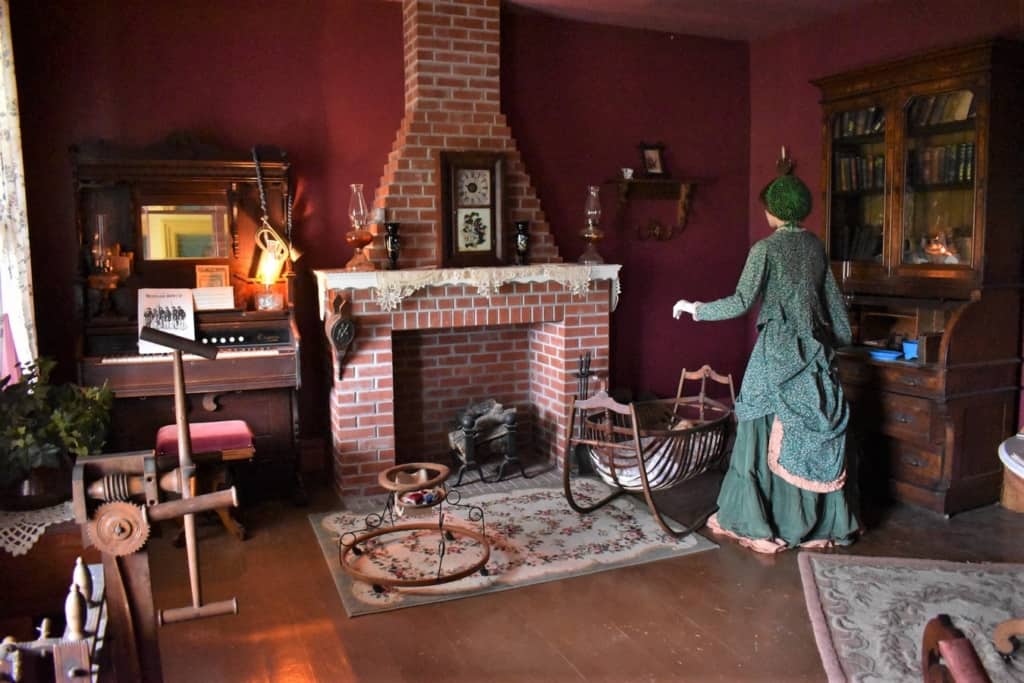
Life on the Plains
When it was built, the fort had been originally named Fort Fletcher. This outpost was designed to help protect wagon trains and stagecoaches from attacks by Native Indian tribes. Even with the military presence, raids would still be made by the Cheyenne and Arapaho. In late 1866, the name was changed to Fort Hays t honor General Alexander Hays, who served on the side of the Union, during the Civil War. After the railroad was built five miles to the north, the fort had to be relocated in 1867. With the grouping of the railroad, nearby Big Creek, and the fort, it was just a matter of time before new communities sprung up.
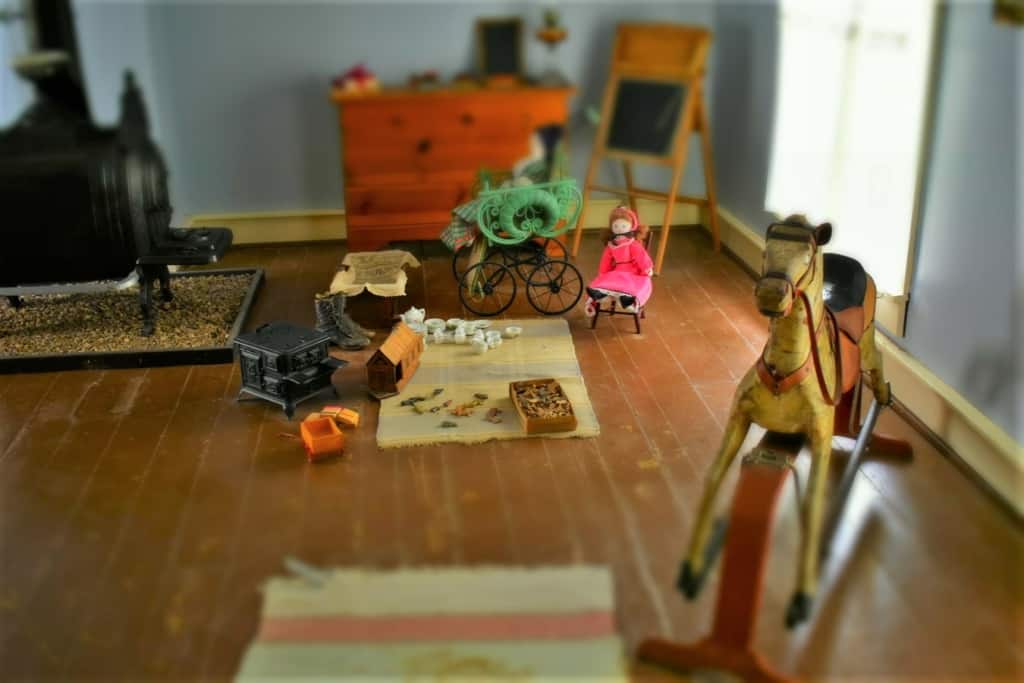
Family Life
After stopping at the visitor’s center, we soon found ourselves in the midst of a tour. While the original fort contained around 45 structures, we found far fewer remain. Our guide led us to a row of houses that would have been home to officers and their families. Inside we found the rooms set up much like they would have been during the times that the Army was taming the plains. While we saw similar accommodations during a visit to Fort Scott, the addition of the mannequins made this really look like a home.
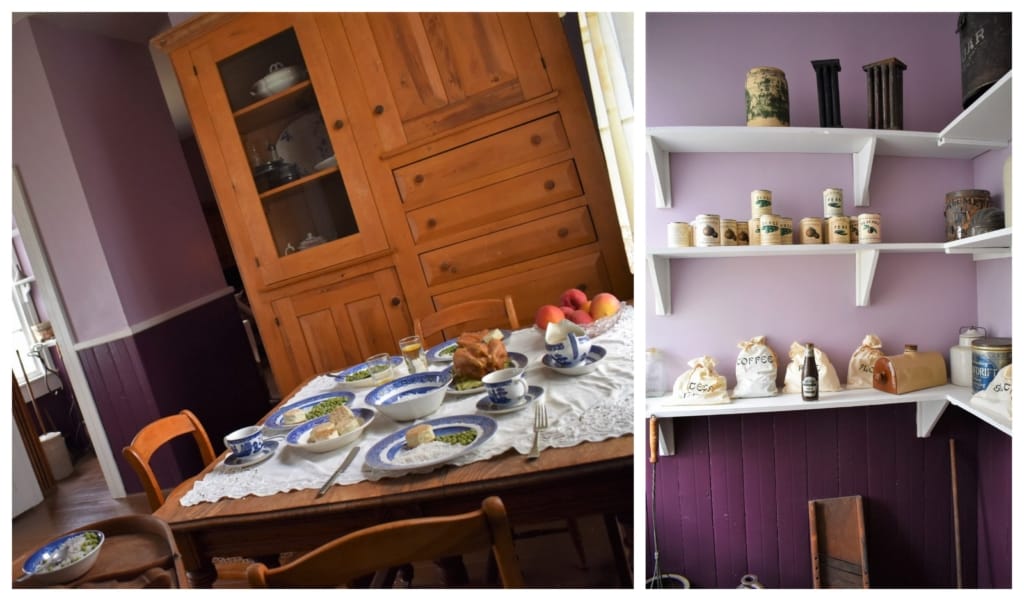
Meal Preparation
Stepping into the kitchen, we could almost smell the freshly baked meal that was displayed on the dining table. In the pantry, we could see a collection of basic ingredients that would have been required for everyday sustenance. Having to make everything from scratch would have certainly occupied a large portion of the day. Having to do it in a house that had no running water, and working with a wood-fired stove would have made the task even more challenging.
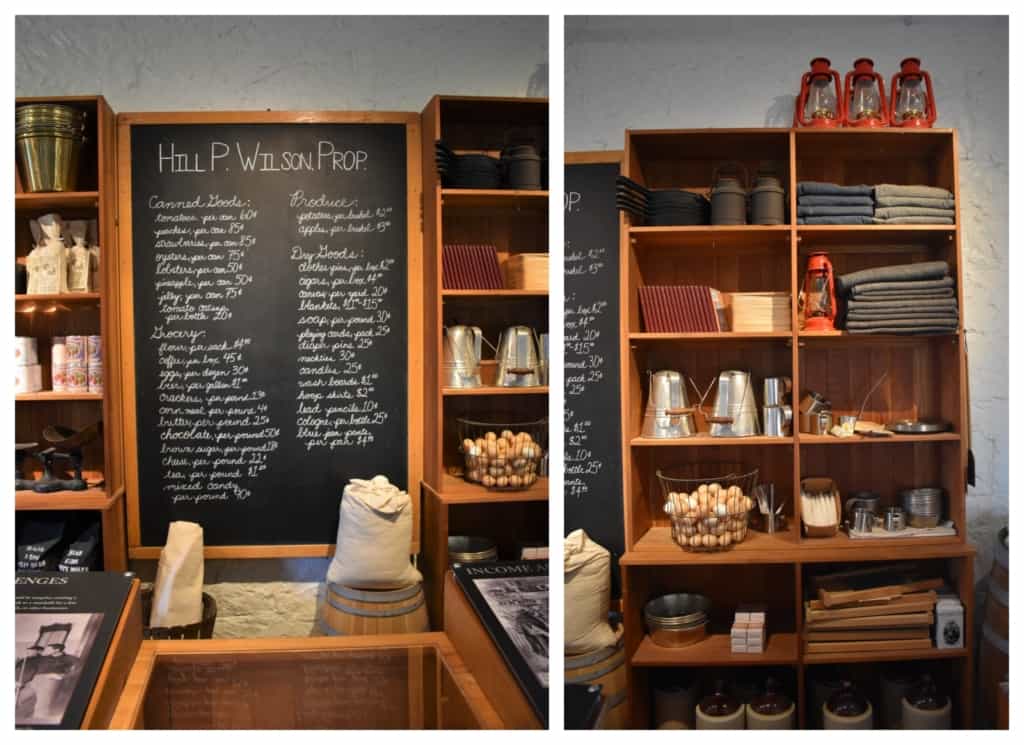
Steady Supplies
In one of the other buildings, we found this exhibit showcasing a general store. It was a reminder of the sparse amount of options people faced when supplying the homes. It’s a far cry from the vast amount of variety that we face whenever we head into a store. Even today’s simplest convenience stores hold a far superior amount of goods than one would have found in the late 1800s.
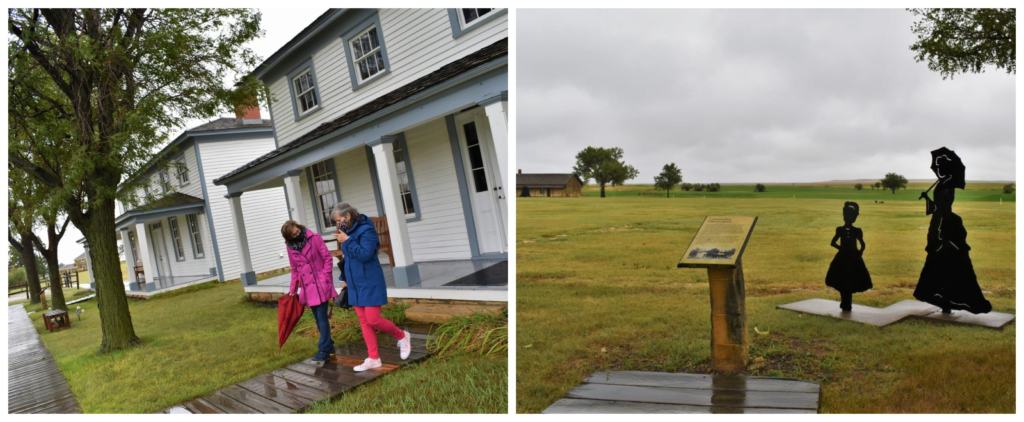
Winter Preview
The scheduled tour section of our visit was wrapping up, and from this point, it is a search and see style of exploring. Just a couple of days prior the temperatures had been in the low 90s, but now we faced 40s and drizzles. It was a harsh reminder of the severe weather changes that the soldiers and settlers would have faced on the plains. This is one of those times we are thankful for the modern conveniences that make handling the unexpected swings a little easier.
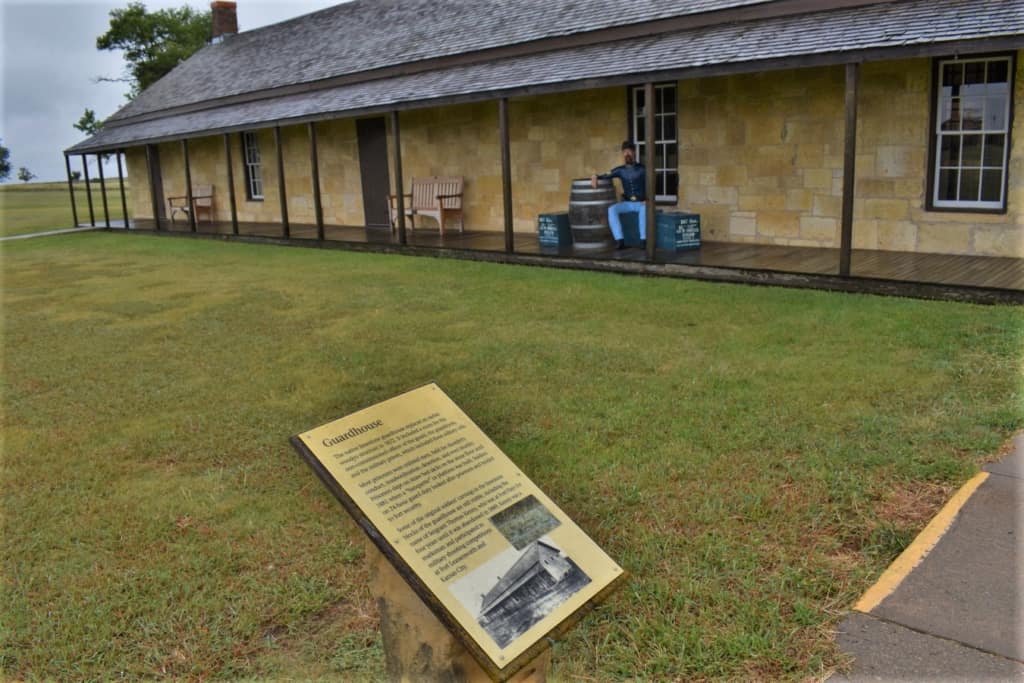
The Guardhouse
Fort Hays State Historic Site still retains four of its original buildings. Besides the two officer’s homes, it also has the 1867 blockhouse, as well as the 1872 guardhouse. We made our way along the path to the guardhouse, which holds the largest collection of exhibits. The structure is 100 feet long and 24 feet deep. We can only imagine the flow of disorderly soldiers who occupied the guardhouse. Being assigned to the task of taming the plains left plenty of free time for mischievousness.
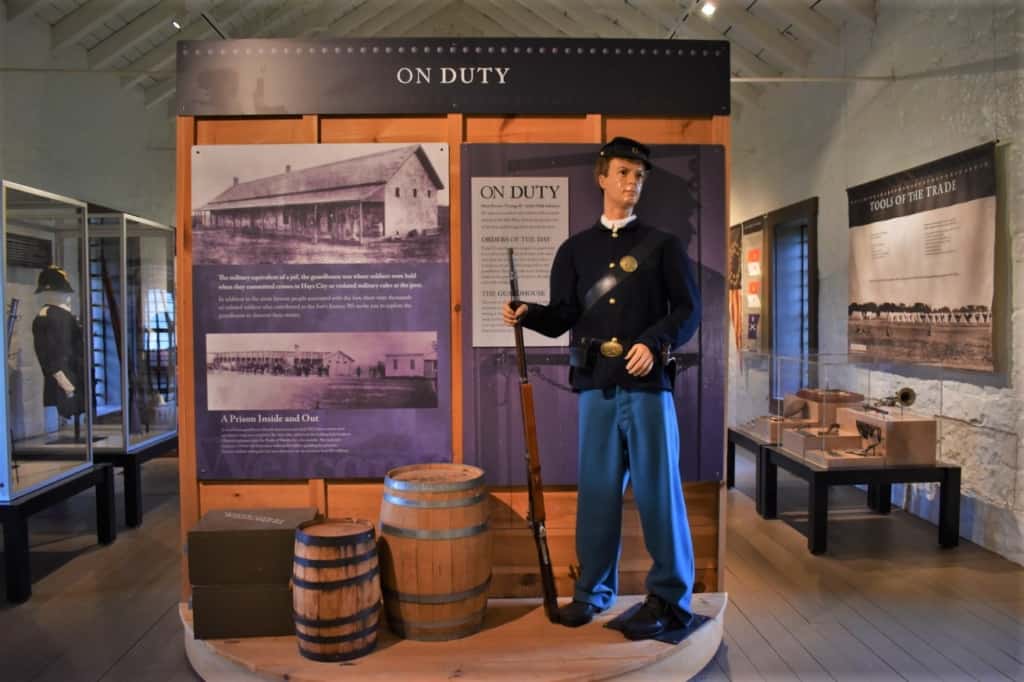
Keeping the Peace
There was a wide range of reasons for punishment among the ranks. Gambling, drunkenness, theft, fighting, insubordination, and desertion were some of the more common. The levels of discipline were usually prescribed by the commanding officer. With room and board is supplied by the Army, the soldier was free to use his pay for how he saw fit. Too many filled the empty hours with liquor. Touring sites, such as Fort Hays, provides a stark shot of reality to the life faced by soldiers on the western front.
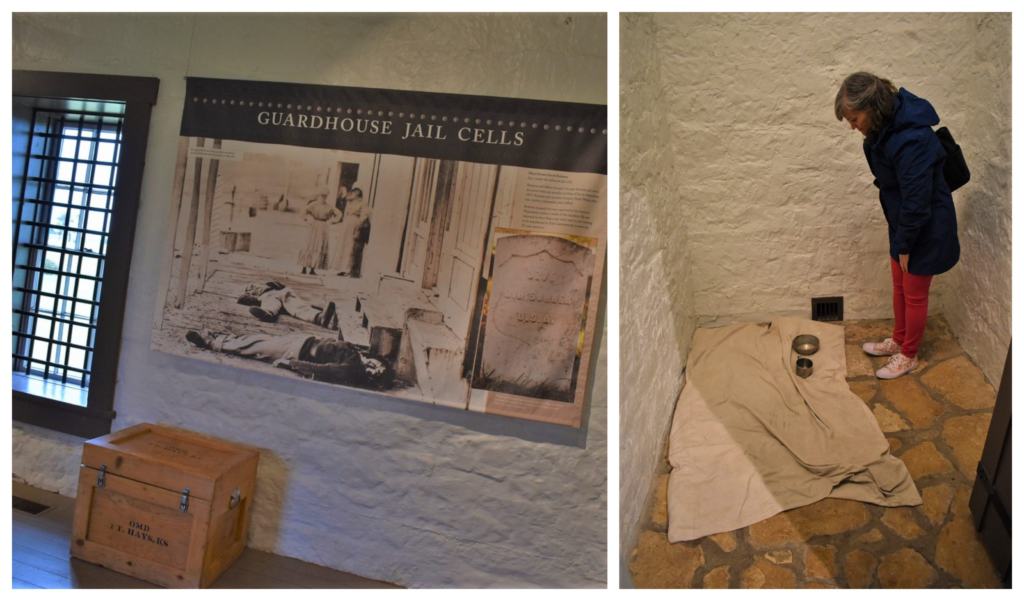
Cramped Confines
Duties of the soldiers at the fort included things besides regular patrols. Constructing buildings, chopping wood, caring for the animals, and tending vegetable gardens would have kept some busy. The expanding frontier would require the construction of telegraph lines or guarding railroad crews. Even so, there were still those who ended up in the guardhouse. The cells used to house punished soldiers were small, to say the least. With no space to move and bereft of any distractions, the soldier had plenty of opportunities to consider his actions.
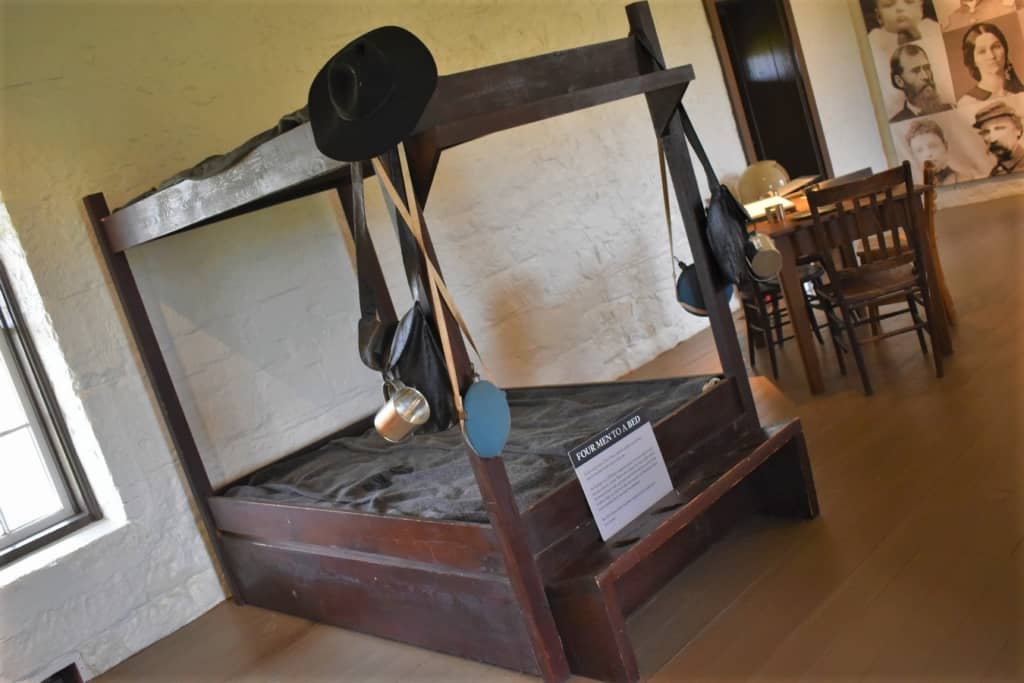
Sharing Space
On the western frontier, you would think that space wouldn’t be an issue. While there was plenty of it in the great outdoors, inside the barracks would be quite different. In the early days of Fort Hays, the soldiers were required to share bunks. It was quite a shock to us to see that each set would hold four men. The task of taming the plains brought some familiar names to Fort Hays. Wild Bill Hickok and Buffalo Bill Cody both served as scouts during campaigns against the Cheyenne and Kiowa.
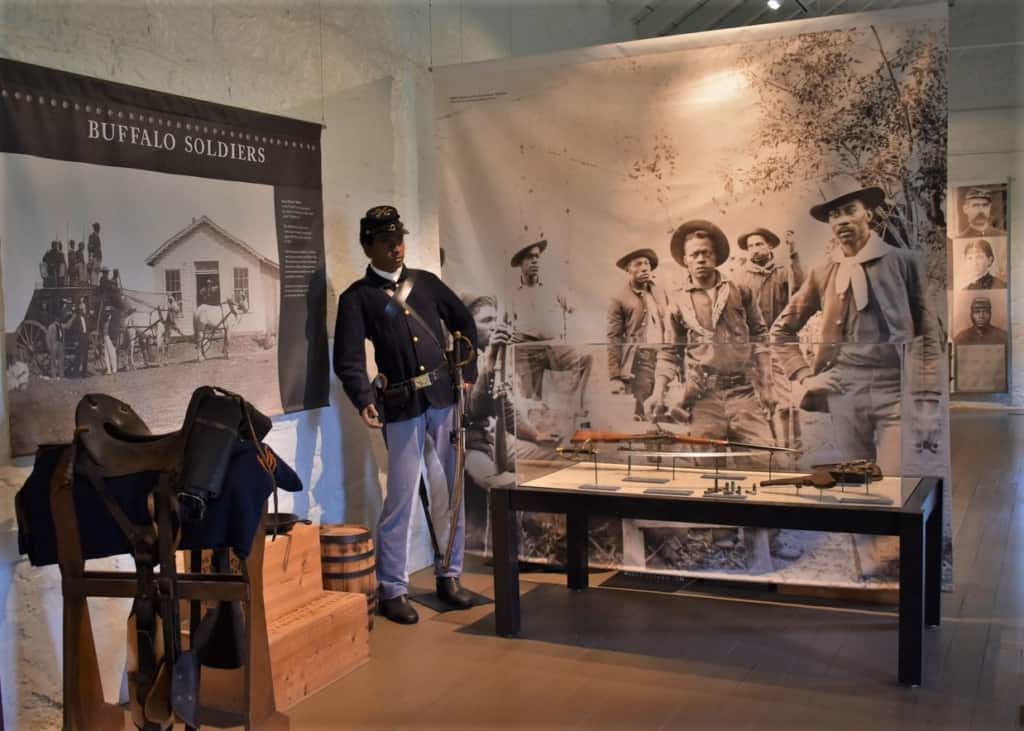
Buffalo Soldiers
Portions of the 10th Cavalry Regiment, often referred to as the “Buffalo Soldiers”, called Fort Hays home temporarily. This group was originally formed at Fort Leavenworth, in 1866. Their nickname was given to them by the Native Indians that they fought in the American Indian Wars. Racial prejudice was just as prevalent in the frontier ranks as it was in civilian life, during the late 1800s. While Buffalo Soldiers made up 20% of the Calvary, they were given less than 4% of the Medals of Honor awarded.
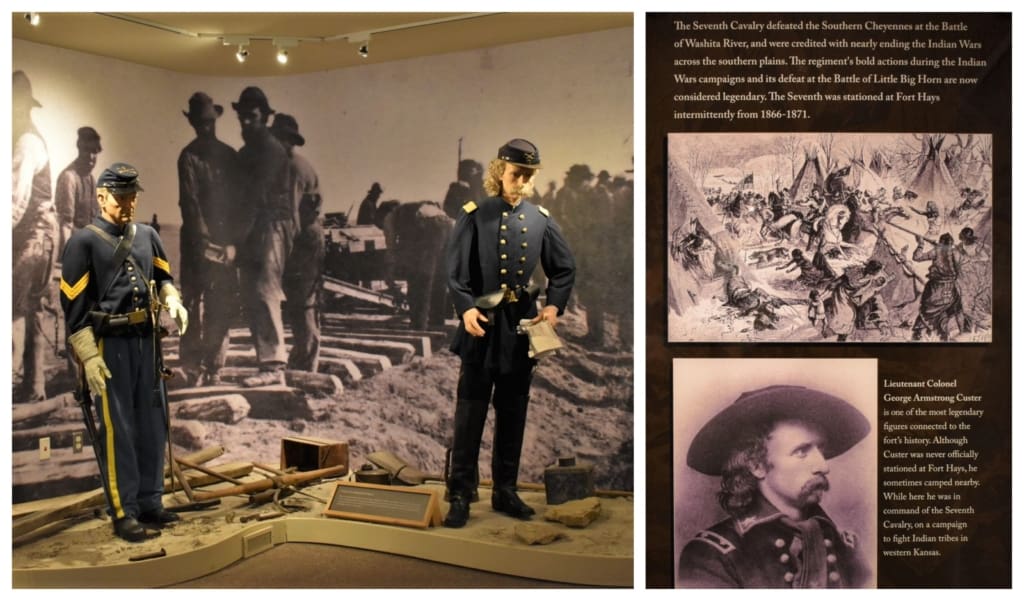
Taming the Plains
The list of infamous names that were stationed at Fort Hays would not be complete without including George Custer. After some dubious activities, which led to a nearly one-year suspension, Custer would lead the 7th Calvary during the Battle of Washita River. Following a lead that this particular band had recently raided white settlers, they attacked Black Kettle’s party of Cheyenne at their winter camp near Cheyenne, Oklahoma. Wintering parties included Arapaho, Kiowa, and Comanche, all combined around 6,000 Native Indians who were camped along portions of the river. Black Kettle’s group of Cheyenne was situated farthest west on the Washita River.
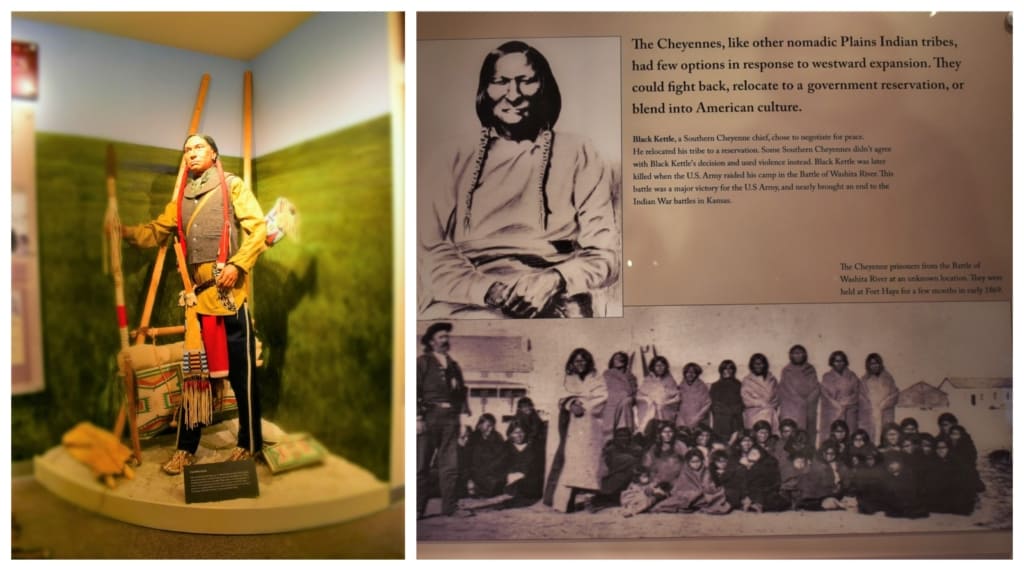
Hard Decisions
Black Kettle was no stranger to the growing push to remove native Indians from desirable lands. His tribe had been one of those that the 3rd Colorado Calvary had almost completely slaughtered during the Sand Creek Massacre. Most of the victims of this raid were women and children. Even after this assault, Black Kettle continued to counsel for peace. He knew that the Native Indian tribes did not have the numbers to present a significant military resistance. This Cheyenne chief moved the remaining members of his tribe to the newly formed Indian Territory in Oklahoma. Unfortunately for him, some of the younger members refused to accept his pacifist route and struck out on raids and ambushes into the surrounding territory.
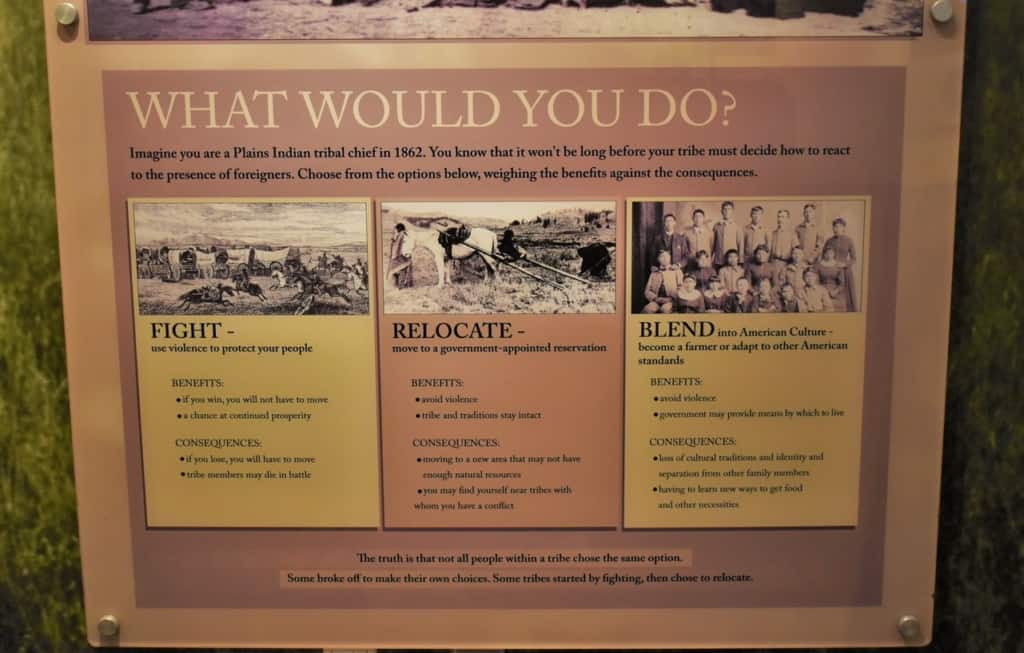
Fight for Freedom?
On November 27, 1868, Custer led the 7th Calvary on an attack against Chief Black Kettle. The troops killed around 100 Native Americans, including Black Kettle and his wife, who were shot in the back. The military hailed the raid as a victory that pushed the Native Indians back to the reservation lands set aside for them. As we examined the exhibits at Fort Hays, it made us wonder how we would have fared in the same scenario. This is one of those difficult visits that call for us to lay aside any prejudices we have learned in life and concentrate on the morality of the situation. Would we have been able to maintain a passive approach in the face of so much aggression?
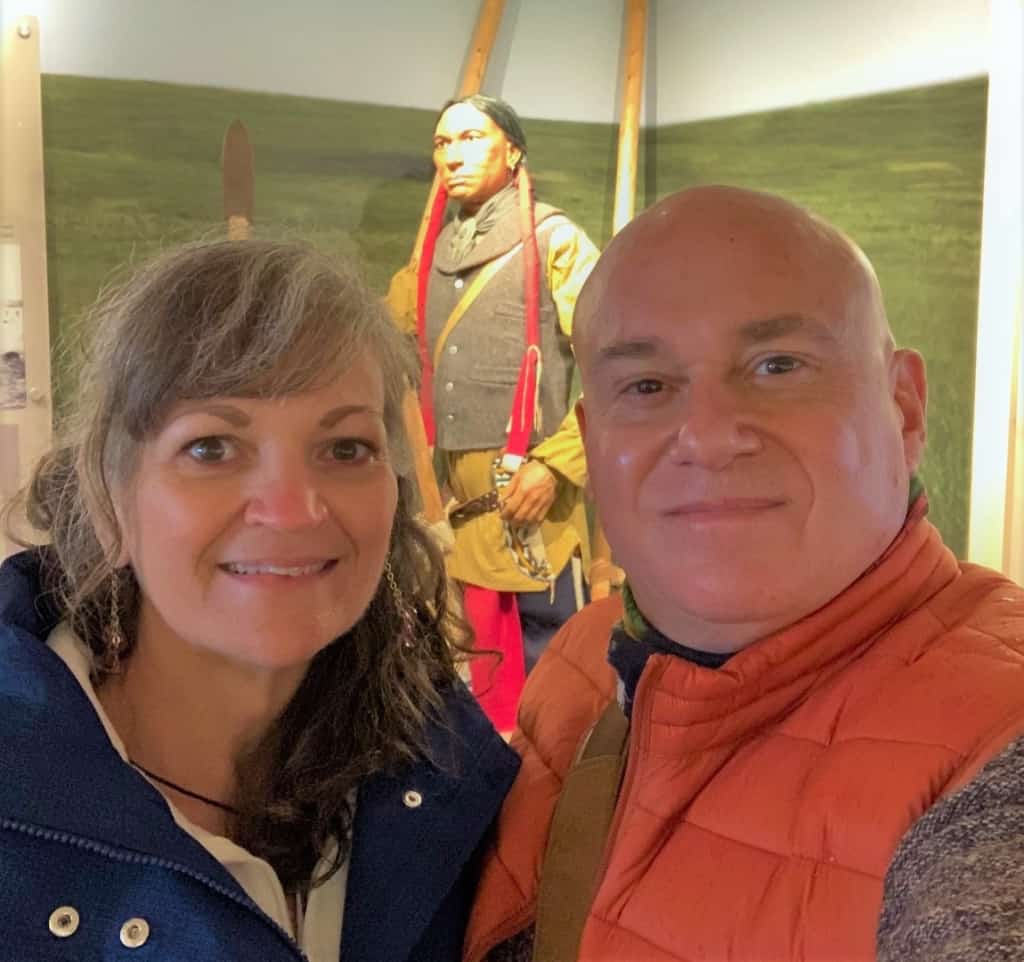
History Unfolds
We have said many times, that travel is our form of continued education. Visiting sites such as Fort Hays help us develop a better understanding not only of the past but how the actions of our forefathers played into the development of the current world in which we live. By the time we completed our tour of the fort, we had a better understanding of what took place during the period of taming the plains. As a wise man once said, “You have to know the past to be able to learn from it.” These historical experiences help us stitch together a picture of what took place out on the western frontier.


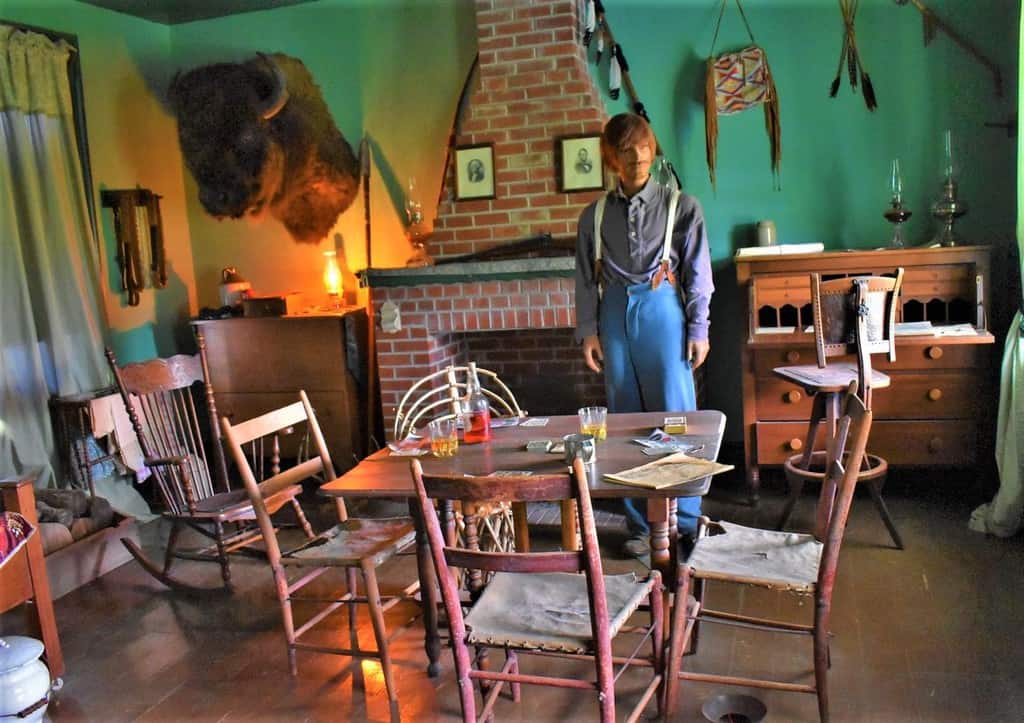


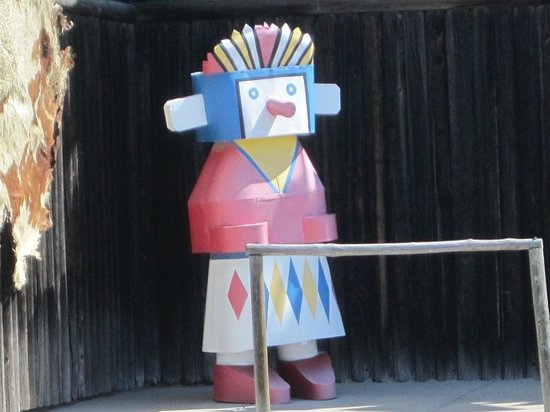
Fort Scott really is a treasure for anyone who likes Kansas history! Thanks for the tour. It has been some time since I visited there.
That is another great fort and one we also highly recommend. So glad you enjoyed the article.
Fascinating history at Fort Hays. So much to reflect upon — including the hard decisions of the tribes. I wasn’t familiar with Black Kettle –very interesting.
Much like today, those were times filled with difficult decisions.
I love visiting living museums and the dioramas in these rooms are so well done. I would definitely love to visit this some day, thanks for the tour.
We were very impressed with the quality of the displays. Hope you can make it sometime.
So many collections available in Fort Hays! I believe we visited the state historic park on one of our westward journeys home from Pittsburg passing thru Wichita!
We know that you and Bill are quite familiar with exploring Kansas. Glad to hear that you have enjoyed this site, as well.
Yet another historic site! I am really missing being able to visit the US and explore sites like this…
We hope that the current restrictions will pass next year. There are so many places we want to explore, as well.
We have been through Kansas tons of times but we haven’t stopped in Fort Hays. We need to see this!
Be sure to save time to explore more of Fort Hays. It has a lot to offer travelers.
Thanks for the well written article about Ft Hays. I have always been proud of it and glad you enjoyed it. My sister has volunteered there for years.
We appreciate your comment. Fort Hays was such an interesting place to explore. The city should be proud to have such a well-done attraction for all to enjoy.